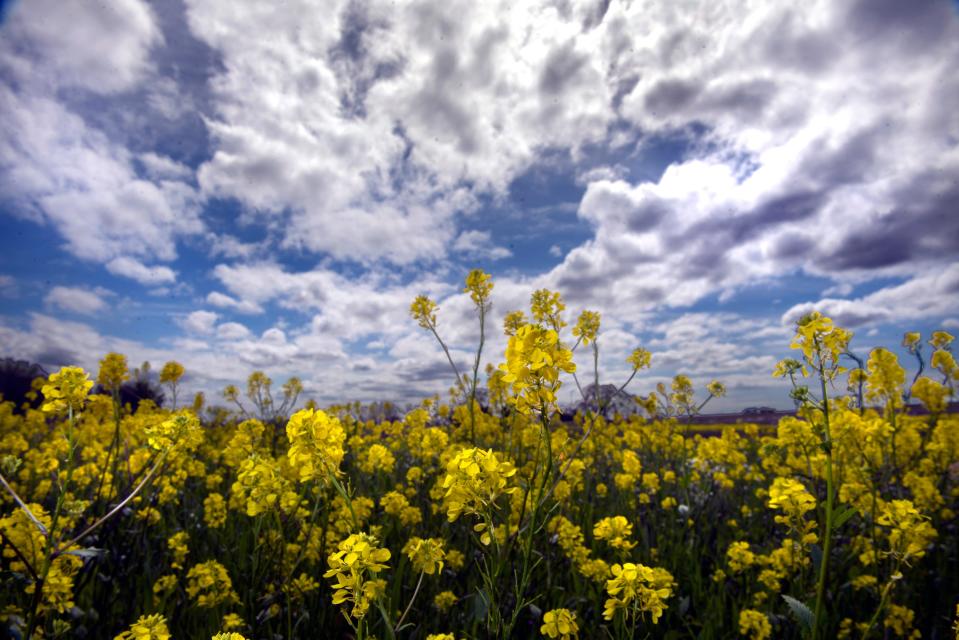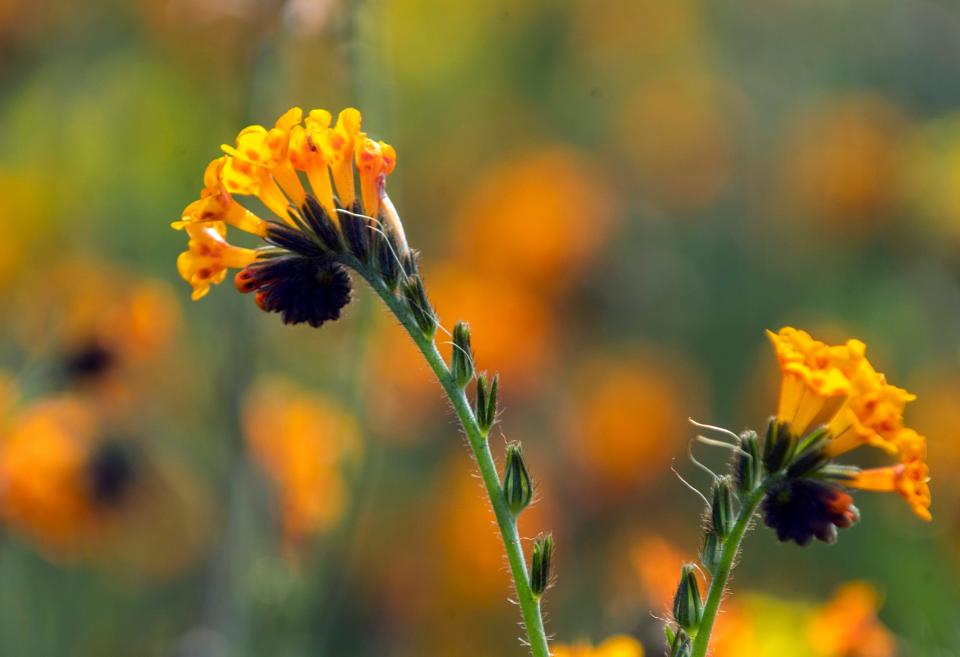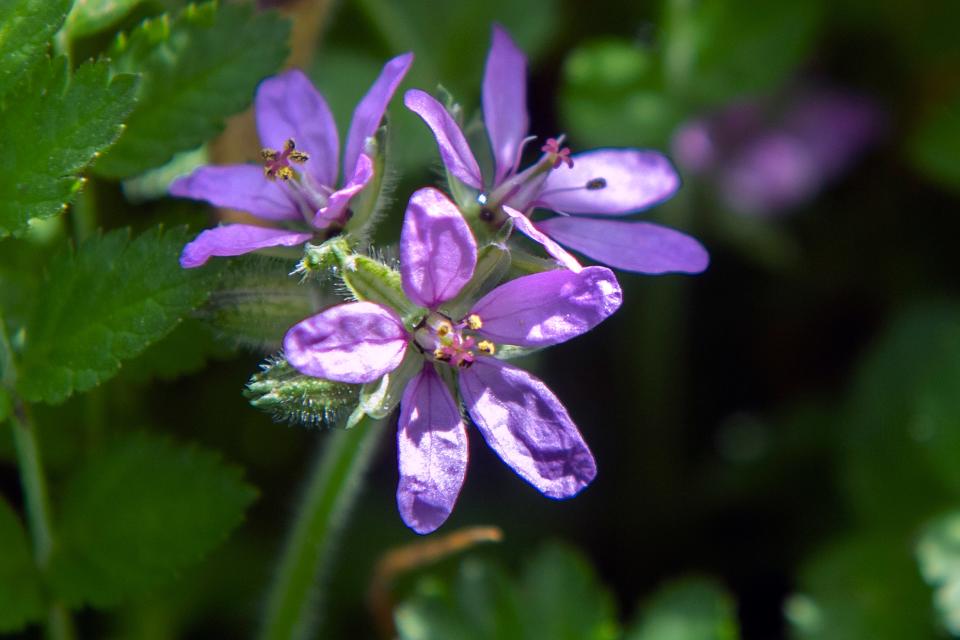Expect epic wildflower blooms ahead. Here's where to find them in Northern California
Epic rain and snowfall over the last three months have dumped over 55 feet of snowfall at Dodge Ridge Ski Resort east of Sonora, and rainfall in the Sierra foothills is measured in multiple feet! Floods are one result; the beginnings of an epic bloom of Sierra foothills wildflowers is another.
Remember that magnificent flower displays depend on several variables: adequate recent rainfall, elevation (Delta wildflowers will be blooming long before those in higher, colder Sierra locations), exposure to sunlight, and daytime temperatures (flowers on south-facing slopes will bloom long before shadier places). So, plan a road trip (or two), taking in our local rivers, noteworthy parks, and wildflowers galore. Let’s go exploring; depending upon your destination, your reward will be fields of brilliant color, brought to you by California poppies, fiddleneck, lupine, Indian paintbrush, purple vetch, blue dick, western redbud, and a host of other varieties.
Start your search with our local rivers and their tributaries, looking north to south, the American River, Cosumnes, Mokelumne, Calaveras, and Stanislaus rivers. Follow those river valleys east into Sierra foothills, linking to Gold Rush sites, cute towns with mining and logging history, restaurants, and watering holes perfect for a midday layover. Along the way, we’ll note several parks rich in insight and historical significance. And, since these tour options often intersect the quaint towns along the Gold Rush Highway 49, plenty of comfy motels and historic hotels, interlaced with eating and noshing outlets, offer the option of extended, overnight touring.
Add to your discovery toolbox, in addition to camera and binoculars. Download smartphone apps like AllTrails or TrailLink for finding hiking trails, and LeafSnap, a marvelous app that identifies wildflowers and trees, making one almost an instant botanical expert. Follow the etiquette of explorers: don’t pick the flowers, stay on existing trails, and don’t trample flower fields. Photographing your pals lounging in colorful flower displays may be inviting, but don’t. Pack out all your trash, leaving only footprints and taking only memories.

Start with the fabled American River, the site of California’s gold discovery in 1848. Options include the lower American, with many stopping-off sites along the American River Parkway, from Old Sacramento east to Lake Natoma, where California poppies, purple lupine, Indian paintbrush, and other colorful displays are already bursting forth. Stop at Sacramento Bar Park in Fair Oaks or Lower Sunrise Recreation Area just off Sunrise Boulevard in Rancho Cordova, follow the river to the old Fair Oaks Bridge circa 1909, or venture about 25 miles further up the South Fork to the 1848 gold discovery site in Coloma (memorialized by the Marshall Gold Discovery State Historical Park), and explore trails in any of these watersheds.
Explore the Cosumnes River Preserve, where the undammed Cosumnes empties into the Mokelumne River, two miles north of Thornton (don’t miss Primo’s Bakery in Thornton for delectable Mexican baked goods). The preserve’s trail network takes you to the Cosumnes and the Mokelumne Rivers through riparian forest teaming with birds of all stripes and large varieties of wildflowers. In 1862, massive Valley floods wiped out San Joaquin County’s second-largest city and port, Mokelumne City, sweeping all its wooden buildings miles downstream into the Delta, never to be rebuilt.

Tour east to the upper Mokelumne River watershed; at Pardee Reservoir; cross the old dam and follow the picturesque Stony Creek Road east to Jackson. Stony Creek is a favorite, remarkably scenic. As you cross the creek on the new bridge, be observant – and spot the old Stony Creek Bridge, built in 1880, abandoned in 1955, and hidden in the foliage. Continue up the steep road, then descend into Jackson, a wonderfully-preserved gold rush town, taking in the old National Hotel and other historic sites on Water Street.
Exploring south on Highway 49, approaching the Mokelumne, go east on Electra Road, where fields of bright orange poppies grace south-facing hillsides. Or, range further east and find Indian Grinding Rocks State Park, where, hundreds of years ago, California’s indigenous peoples gathered in summer and fall to harvest acorns, leaving behind 1845 mortar holes in the marbleized limestone. The park features the Chaw’se Indian Museum, a recreated Miwok village complete with a huge ceremonial roundhouse, all just eight miles east of Jackson.
Don’t overlook our local Calaveras River; start by hiking or biking the trail west from the University of Pacific to Brookside, where many wildflowers can be found. Hike the path down the Calaveras behind Brookside’s grand homes and picture the river as it was 170 years ago; the flowers are an added benefit.

Finally, check out the Stanislaus River and the historic Knights Ferry Covered Bridge. The town was established in 1849 when Dr. William Knight (a member of the 1844 Fremont party) returned to a good river crossing and found a ferry. Within a few years, a toll bridge was built, washed away in the massive flood of 1862; the new bridge was finished in 1864, a higher and more stout, the longest covered bridge in the state at 333 feet. It’s now protected by the state park, its trails perfect for seeking wildflowers. The old Mill House, circa 1854, and the Tulloch Mill are adjacent to the bridge. The town grew to include several hotels and taverns (one still stands, dating to 1856) and the International Order of Odd Fellows (IOOF) hall, circa 1870, still used today for community events.
For insight: American River Parkway, regionalparks.saccounty.net; Cosumnes River Preserve, Cosumnes.org; hikes, AllTrails or TrailLinkapps; Indian Grinding Rocks Park, parks.ca.gov; Marshall Gold Discovery State Park, parks.ca.gov; wildflower identification, LeafSnap app.
What’s on your travel agenda? Contact Tim, tviall@msn.com; happy travels in the west!
This article originally appeared on The Record: With wet weather, expect an epic wildflower bloom season ahead

